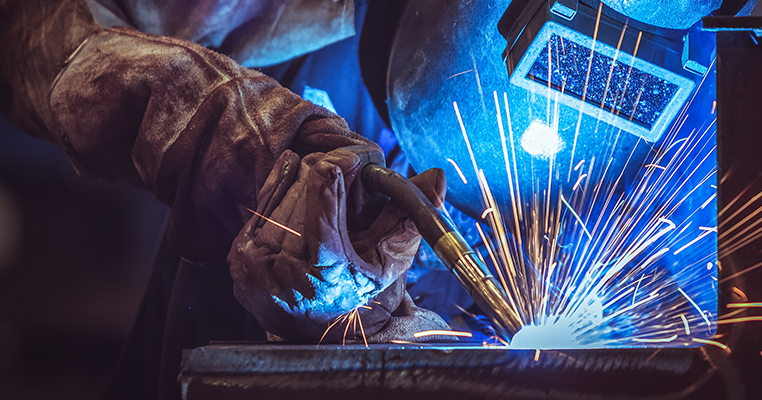The Ultimate Guide to Welding WPS Procedures: A Detailed Introduction for Welders
In the complex globe of welding, Welding Procedure Requirements (WPS) work as the foundation of guaranteeing quality, consistency, and safety in welding procedures. Understanding the subtleties of developing, implementing, and checking WPS procedures is crucial for welders seeking to raise their craft and fulfill industry criteria. As we delve into the numerous parts of a WPS and check out the intricacies of certification and certification, we will discover the essential duty these procedures play in the realm of welding. Allow's embark on a trip to untangle the intricacies and value of WPS procedures in welding practices.
Significance of WPS Procedures
Recognizing the value of Welding Treatment Specs (WPS) procedures is important for making sure the high quality and integrity of welded structures. WPS treatments function as a roadmap for welders, describing the needed actions, criteria, and materials called for to achieve an audio weld. By adhering to WPS standards, welders can guarantee consistency in their work, bring about dependable and structurally audio welds.
One of the primary reasons why WPS treatments are essential is their duty in preserving weld top quality and integrity. Complying with the specified welding parameters and methods detailed in the WPS aids avoid issues such as porosity, splitting, or incomplete fusion, which can compromise the stamina and longevity of the weld.

Parts of a WPS
A Welding Treatment Requirements (WPS) commonly makes up vital parts that detail the specific demands for carrying out a weld, ensuring consistency and quality in the welding process. The vital elements of a WPS consist of essential variables such as base metals, filler steels, preheat and interpass temperature levels, welding processes, shielding gases, welding placements, and post-weld warmth therapy requirements.
Base metals describe the materials being signed up with, while filler steels are made use of to load the gap in between the base steels throughout welding. Preheat and interpass temperatures are critical for managing the warm input and protecting against concerns like cracking or distortion. The welding procedure outlines the particular strategy to be utilized, whether it's gas metal arc welding (GMAW), protected metal arc welding (SMAW), or one more approach. Protecting gases safeguard the weld pool from climatic contamination. Welding settings specify the orientations in which welding can be executed. Post-weld warm therapy may be essential to relieve anxieties and enhance the weld's properties. A comprehensive understanding of these elements is crucial for producing a effective and extensive WPS.

Certification and Qualification
Having established the vital parts of a Welding Treatment Spec (WPS), the focus currently changes in the direction of the crucial facets of credentials and accreditation in welding methods.

Qualification, on the various other hand, is the official acknowledgment of a welder's credentials by a relevant qualification body or company. Welding accreditations are generally based upon the details welding procedures, products, and positions a welder is certified to function with. Holding a valid welding accreditation shows that a welder satisfies industry standards and is competent to carry out welding tasks to the called for requirements.
Creating a WPS
To develop a Welding Procedure Requirements (WPS) that fulfills sector standards, mindful factor to consider why not find out more of welding processes, products, and operational criteria is vital (welding WPS). The primary step in producing a WPS is to recognize the welding procedure to be made use of, such as gas steel arc welding (GMAW) or secured metal arc welding (SMAW) Once the welding procedure is determined, the next vital element is selecting the appropriate materials, taking into consideration aspects like base metal kind, density, and joint layout. Functional specifications such as welding existing, voltage, travel speed, and securing gas composition need to additionally be thoroughly specified in the WPS.

Carrying Out and Monitoring WPS
Upon settling the detailed Welding Treatment Spec (WPS) that carefully information welding procedures, materials, operational parameters, and quality guarantee steps, the emphasis changes to successfully implementing and keeping an eye on the well established procedures. Application involves ensuring that all welders associated with the job know with the WPS and follow it thoroughly during the welding procedure. This needs offering adequate training and supervision to assure adherence to the specified treatments. Keeping track of the WPS entails constant oversight to validate that welding activities straighten with the documented specifications. Evaluations, testing, and high quality control procedures are necessary parts of the surveillance process to identify any type of issues or inconsistencies immediately. Normal audits and reviews of the welding treatments assist in preserving consistency and high quality throughout the project. Effective application and surveillance of the WPS are important for making sure the honesty, strength, and safety of the welded joints, inevitably adding to the total success of the welding job.
Verdict
In conclusion, understanding and adhering to Welding Procedure Specs (WPS) is crucial for welders to ensure high quality, consistency, and safety and security in their job. By understanding the parts of a WPS, obtaining correct qualifications and accreditations, creating thorough treatments, and applying and monitoring them blog successfully, welders can improve their abilities and effectiveness in welding methods. Sticking to WPS procedures is necessary for generating top quality welds and meeting market standards.
In the elaborate globe of welding, Welding Treatment Specifications (WPS) serve as the backbone of guaranteeing high quality, consistency, and security in welding procedures. The welding process details the particular method to be utilized, whether it's gas metal arc welding (GMAW), shielded metal arc welding (SMAW), or one more approach.To develop a Welding Procedure Spec (WPS) that fulfills market criteria, careful consideration of welding procedures, products, and functional specifications is essential. The very first step in creating a WPS is to recognize the welding process to be made use of, such as gas metal arc welding (GMAW) or shielded metal arc welding (SMAW)Upon settling the extensive Welding Procedure Spec (WPS) that thoroughly details welding processes, materials, operational criteria, and high quality guarantee steps, the emphasis changes to properly executing and monitoring the established procedures.